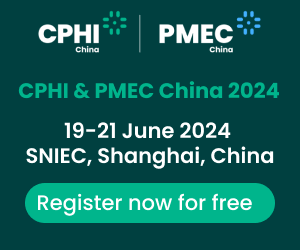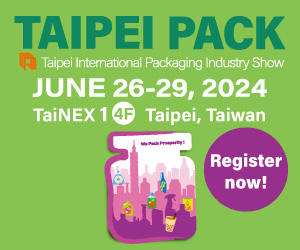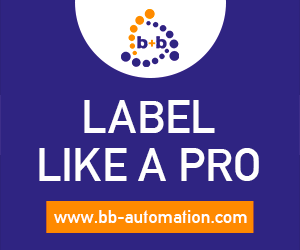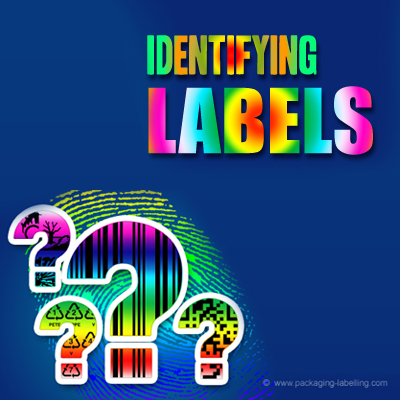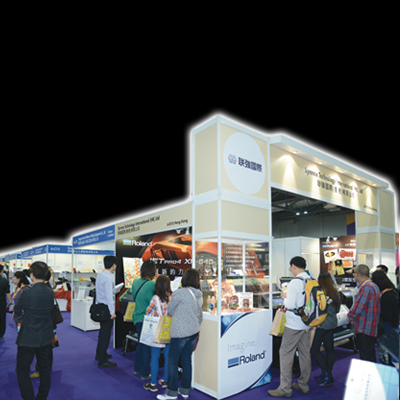Articles
Revolutionizing Packaging: The Impact of Nanotechnology in the Packaging Industry
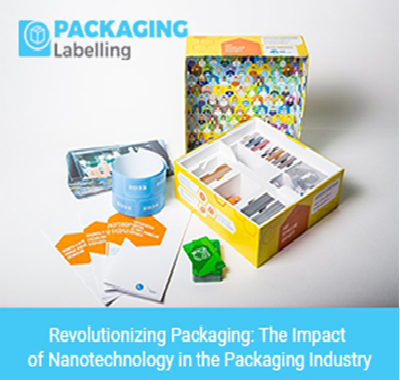
Introduction
In recent years, the packaging industry has experienced a profound transformation due to the impact of nanotechnology. This cutting-edge scientific discipline, which involves manipulating materials at the nanoscale level, has brought about revolutionary advancements in packaging design, materials, and functionality. The convergence of nanotechnology and packaging has not only significantly enhanced product preservation and protection but has also ushered in a new era of sustainability and consumer engagement.
Impact of Nanotechnology on the Packaging Industry
1. Nanomaterials for Enhanced Barrier Properties:
Nanotechnology's integration into the packaging industry has brought about a fundamental shift in how we perceive and utilize packaging materials. One of the most remarkable applications of nanotechnology in packaging is the development of nanomaterials with unparalleled barrier properties. These nanomaterials are engineered at the nanoscale level, allowing them to exhibit exceptional resistance to external factors such as moisture, oxygen, and contaminants.
Traditionally, packaging materials have been limited in their ability to provide a comprehensive shield against environmental elements that can compromise the quality and safety of products. However, with the advent of nanotechnology, materials scientists have been able to manipulate the structure and composition of materials at the nanoscale, resulting in the creation of barriers that are significantly more robust and effective.
Nanomaterials, due to their unique structure, offer several advantages when it comes to enhancing barrier properties:
a. Impermeability: Nanoscale structures can be engineered to be exceedingly dense and impermeable. This means that even gases or molecules that would typically infiltrate conventional packaging materials are effectively blocked by nanomaterial barriers.
b. Reduced Thickness: Nanomaterial barriers can achieve the same level of protection as thicker conventional materials. This reduction in thickness translates to less material usage, leading to lighter and more eco-friendly packaging options.
c. Tailored Selectivity: Nanotechnology enables the creation of barriers with selective permeability. This means that certain molecules, such as oxygen or moisture, can be allowed to pass through the barrier while preventing the entry of others. This tailored approach is particularly valuable for products that require controlled atmospheric conditions.
d. Resistance to Wear and Tear: Nanomaterial barriers exhibit improved mechanical properties, making them more resistant to wear and tear during handling and transportation. This prolongs the overall integrity of the packaging and its ability to protect the contents.
From the perspective of the packaging industry, the impact of nanomaterials with enhanced barrier properties is profound. Perishable goods, such as fresh produce, pharmaceuticals, and sensitive electronics, can now be packaged with greater assurance of prolonged freshness and quality. This not only reduces waste but also has significant implications for supply chain efficiency and customer satisfaction.
As consumer awareness regarding the environmental impact of packaging grows, nanotechnology presents a twofold advantage. Enhanced barrier characteristics of nanomaterials lead to longer product shelf life, consequently decreasing the urgency for quick consumption or disposal.
Additionally, the diminished material utilization in packaging utilizing nanotechnology aligns seamlessly with sustainability objectives, thereby minimizing the overall environmental footprint.
In conclusion, the integration of nanotechnology into the packaging industry through the development of nanomaterials with enhanced barrier properties marks a transformative leap forward. This innovation addresses long-standing challenges in preserving product quality, reducing waste, and advancing sustainable packaging practices. As nanotechnology continues to evolve, its role in creating smarter, more efficient, and environmentally responsible packaging solutions is set to become increasingly pivotal.
2. Active and Intelligent Packaging:
The convergence of nanotechnology and packaging has given rise to a paradigm shift in the way products are packaged and interact with their environment. This transformation is evident in the emergence of active and intelligent packaging solutions, which are designed to actively monitor, respond to, and enhance the conditions of packaged products. At the heart of this revolution lies nanotechnology, enabling the creation of packaging that goes beyond passive containment to offer dynamic functionality.
a. Nanoscale Sensors and Monitoring: One of the key contributions of nanotechnology to active and intelligent packaging is the development of nanoscale sensors. These sensors, often integrated directly into the packaging material, are capable of detecting and measuring various parameters such as temperature, humidity, gas concentration, and even the freshness of perishable products. The data collected by these sensors can be transmitted in real time to manufacturers, distributors, or consumers, enabling informed decisions and timely interventions.
b. Real-Time Feedback and Alerts: Active packaging equipped with nanoscale sensors can provide real-time feedback and alerts. For instance, in the food industry, nanosensors can detect spoilage or contamination, triggering alerts to consumers or retailers. This not only ensures product safety but also reduces the risk of consuming compromised goods.
c. Improved Shelf Life and Quality: Nanotechnology-enhanced active packaging contributes significantly to extending shelf life and maintaining product quality. By continuously monitoring and adjusting conditions within the packaging, such as controlling humidity or releasing specific gases, nanoscale innovations can create optimal environments for products to thrive. This is particularly valuable for products with sensitive shelf life considerations, such as fruits, vegetables, and pharmaceuticals.
d. Enhanced Consumer Interaction and Confidence: Nanotechnology-driven intelligent packaging boosts consumer interaction and confidence. Via their smartphones, customers can instantly access up-to-date details about product status and legitimacy, fostering a stronger bond between the brand and its clientele. This level of transparency not only nurtures consumer trust but also equips them with the knowledge to make well-informed buying choices.
e. Customizable Packaging Experiences: Nanotechnology allows for packaging experiences that can be tailored to specific products or consumer preferences. For example, packaging might change color when a product is no longer fresh or interact with a smartphone app to provide cooking suggestions based on the item's freshness and nutritional content.
f. Minimizing Product Waste: The active and intelligent features of nanotechnology-enabled packaging significantly reduce product waste. Timely alerts about expiration dates or spoilage help consumers use products before they become unsuitable for consumption, minimizing wastage at the consumer level. Similarly, for manufacturers and distributors, real-time monitoring reduces losses due to inadequate storage conditions.
In conclusion, the integration of nanotechnology into active and intelligent packaging showcases its potential to revolutionize how products are packaged and experienced. By combining nanoscale sensors, real-time monitoring, improved shelf life, consumer engagement, and waste reduction, this innovative packaging approach aligns with the demands of modern consumers for transparency, sustainability, and convenience. As nanotechnology continues to evolve, active and intelligent packaging is poised to play an even more prominent role in shaping the future of the packaging industry.
3. Sustainable Packaging Solutions:
The imperative to adopt sustainable practices has steered the packaging industry toward reimagining traditional materials and production processes. Nanotechnology has emerged as a driving force in the creation of sustainable packaging solutions that not only reduce environmental impact but also maintain the integrity and functionality of packaging materials.
a. Eco-Friendly Nanocomposites: One of the remarkable applications of nanotechnology in sustainable packaging lies in the development of eco-friendly nanocomposites. These nanocomposites combine renewable materials with nanoparticles to create packaging that boasts enhanced mechanical properties and barrier performance. By utilizing sustainable resources, such as biopolymers, and integrating nanotechnology, packaging materials become more robust while minimizing reliance on fossil-based plastics.
b. Lightweight and Resource-Efficient Packaging: Nanotechnology enables the creation of lightweight packaging without compromising strength or protective qualities. Traditional packaging often requires multiple layers to achieve necessary barrier properties, contributing to excessive material usage. With nanomaterials, thinner layers can provide equivalent protection, resulting in resource-efficient packaging that requires fewer raw materials.
c. Reduced Environmental Footprint: Nanotechnology-enhanced packaging contributes to a reduced environmental footprint throughout its lifecycle. The use of sustainable materials, combined with optimized designs made possible by nanotechnology, leads to decreased energy consumption during production and transportation. Additionally, the enhanced durability of nanomaterials prolongs the usable life of packaging, reducing the need for frequent replacements.
d. Biodegradability and Recyclability: Nanotechnology has facilitated advancements in designing packaging materials that are biodegradable or more easily recyclable. By incorporating nanoparticles that accelerate degradation or enhance compatibility with recycling processes, packaging materials can avoid long-lasting environmental persistence and promote circular economy principles.
e. Energy-Efficient Production: Nanotechnology-driven sustainable packaging solutions often involve energy-efficient production processes. Nanomaterials can be synthesized using less energy compared to conventional materials, leading to a lower carbon footprint. This aligns with broader sustainability goals by minimizing the environmental impact associated with manufacturing.
f. Consumer Viewpoint and Brand Reputation: Nanotechnology-enabled sustainable packaging solutions deeply resonate with environmentally mindful consumers. Brands that adopt these solutions showcase a dedication to ethical practices, shaping consumer perspectives and fostering loyalty. With consumers placing growing importance on sustainable options, packaging empowered by nanotechnology could serve as a key competitive advantage in the market.
In summary, the integration of nanotechnology into sustainable packaging solutions exemplifies its potential to revolutionize the industry's approach to environmental responsibility. From eco-friendly nanocomposites to lightweight and recyclable materials, nanotechnology offers a spectrum of innovative options that align with both consumer preferences and global sustainability targets. As the packaging landscape evolves, nanotechnology will continue to drive the development of packaging solutions that balance functionality, protection, and environmental consciousness.
Conclusion
Nanotechnology has redefined packaging by bolstering barriers, enabling smart features, and championing sustainability. This shift, captured by the keyword “Impact of Nanotechnology in the Packaging Industry”, signifies a dynamic evolution. From enhanced materials to real-time monitoring, nanotech elevates packaging's functionality. Moreover, it advances eco-friendly solutions, reduces waste, and aligns with green goals.
In this journey, innovation meets responsibility, catering to consumer demands and environmental needs. As nanotechnology progresses, packaging strides into a future where protection, interaction, and eco-consciousness harmonize, promising a brighter path ahead.




